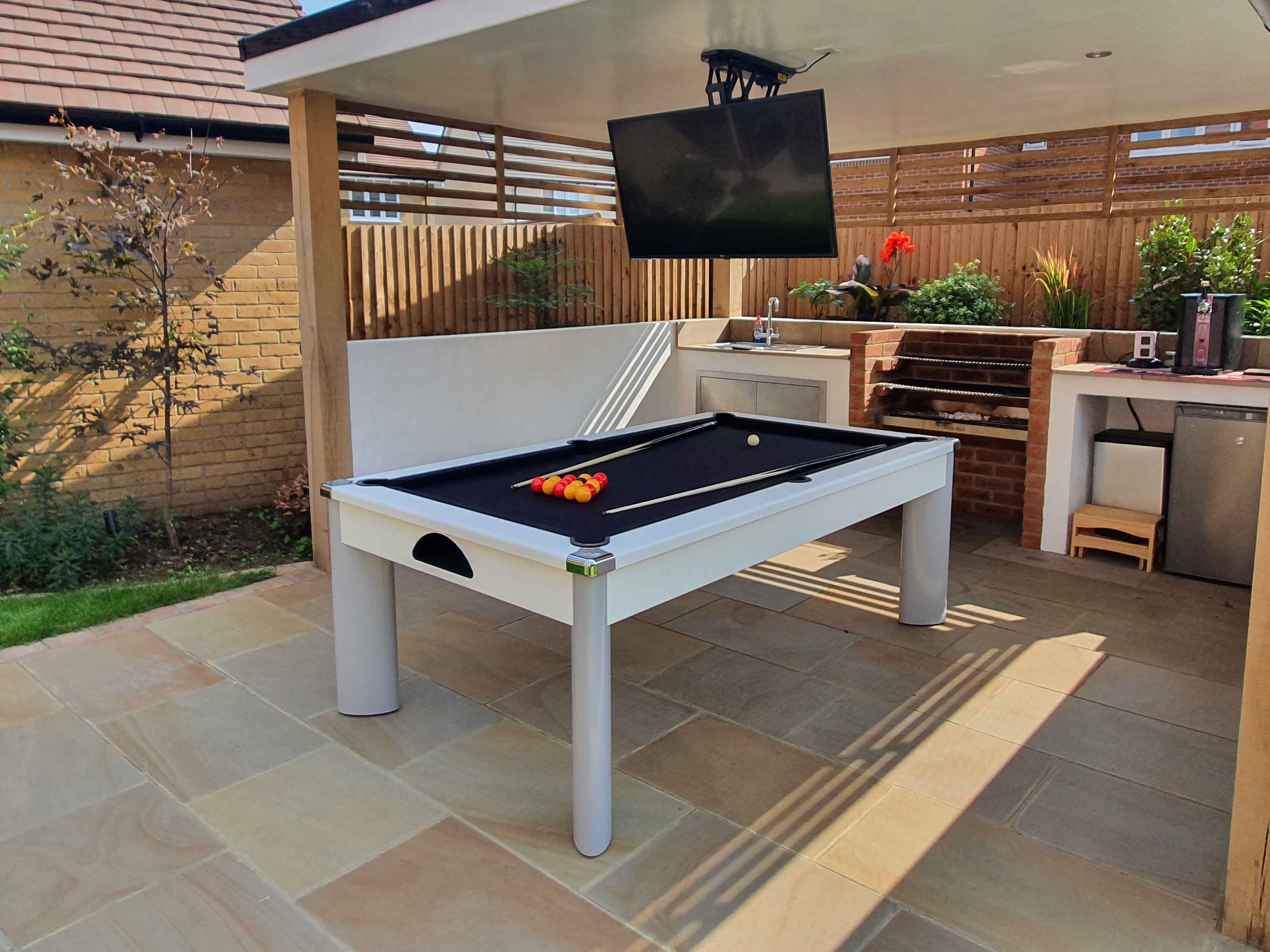
When it comes to choosing the best pool table, the frame of the table deserves some consideration. Weak, flimsy legs are often a problem with cheaply made pool tables. The tabletop accounts for about 90 percent of the total weight of a pool table, so be certain that the legs won’t buckle after just a few games. Similar to the challenge of stability in foosball tables, a pool table’s legs must be strong enough to support the tabletop and stable enough to keep balls from shifting and rolling between turns. Two-piece legs are made up of two separate posts at each end that connect across the end of the pool table with a thin sheet of plastic, wood, or metal that increases the strength and stability of the structure. Posts are the most commonly used type, with robust bracers on the interior corner of each leg to keep the post from shifting, bending, or breaking. There are two styles of pool table legs: posts and two-piece legs. After measuring the space available in the room, refer to this helpful room-size chart to determine the appropriate table size and cue length based on the room’s dimensions. However, what makes a pool table regulation size is the ratio of length to width: In order to fit these parameters, pool tables must maintain a 2:1 ratio of length to width. Professional pool tables typically measure 8 or 9 feet long, while bar-size pool tables are only about 7 feet. Also account for the space around the pool table that’s required to use a pool cue. Dimensionsīefore shopping for a pool table, figure out how large a table can fit comfortably in the room or area where it will be set up.

Photo: What to Consider When Buying a Pool Tableīefore investing in this new piece of recreational equipment, take the time to learn a few important product details when choosing the best pool table for your home. BEST FOR SMALL SPACES: RACK Crux Folding 55 in Billiard/Pool Table.BEST PORTABLE: GLD Products Fat Cat Trueshot 6 Ft.




 0 kommentar(er)
0 kommentar(er)
